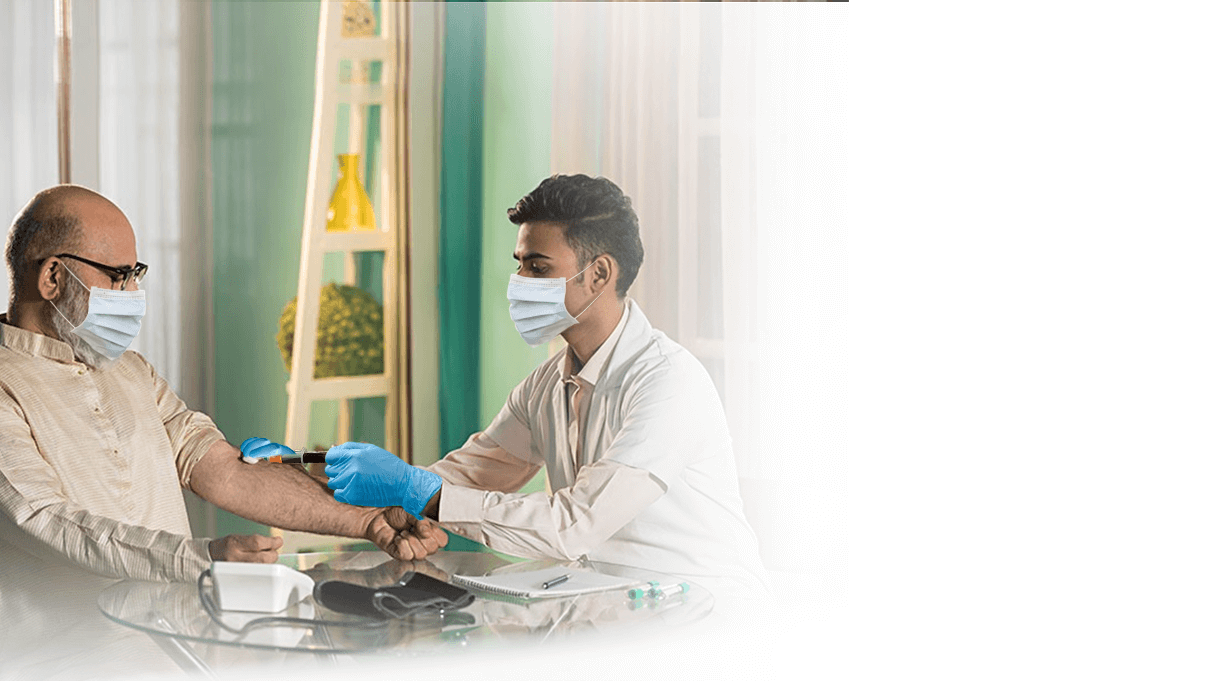When you hear the word "cholera," you might think of old pandemics and water crises from history books. But cholera is still very much a public health threat today, especially in areas with poor sanitation, limited healthcare access, and unsafe drinking water. It spreads quickly, causes severe dehydration, and can be deadly within hours if not treated.
What Is Cholera?
Cholera is an acute diarrheal illness caused by the bacterium Vibrio cholerae, usually contracted through contaminated food or water. It leads to profuse watery diarrhea, which can result in rapid dehydration, shock, and death if untreated.
There are several strains of Vibrio cholerae, but serogroups O1 and O139 are the main culprits in epidemic and pandemic outbreaks. Cholera remains endemic in over 50 countries and is a recurring health crisis in areas facing natural disasters, refugee displacement, or inadequate infrastructure.
The bacteria produce a toxin that causes the intestinal cells to release large amounts of water, leading to severe watery diarrhea. The sheer volume of fluid loss can overwhelm the body quickly, especially in children, the elderly, and the malnourished.
How Does Cholera Spread So Fast?
Cholera transmission occurs primarily through ingestion of contaminated water or food. The bacteria thrive in unsanitary environments where human waste contaminates water sources, especially during floods, droughts, and overcrowding.
Modes of Cholera Spread:
- Drinking water from contaminated rivers, wells, or tanks
- Eating raw or undercooked seafood (especially shellfish)
- Consuming raw vegetables washed in contaminated water
- Person-to-person via poor hygiene practices (rare, but possible)
Because the incubation period ranges from a few hours to 5 days, cholera can spread before symptoms even appear, making early detection crucial in controlling outbreaks. One of the major reasons cholera spreads so rapidly in communities is the lack of access to clean water and functioning sewage systems. In emergency situations, such as natural disasters or refugee crises, overcrowding and poor hygiene practices exacerbate the risk.
In regions where open defecation is practiced, or where drinking water is drawn from unprotected sources, the bacteria can easily enter food chains and household water supplies, sparking large-scale outbreaks.
What are The Common Symptoms of Cholera?
Cholera symptoms vary in severity. Some people are asymptomatic, but still spread the infection. Others can deteriorate within hours. Up to 80% of infected individuals show mild or moderate symptoms, but the remaining 20% can experience severe illness.
Classic Symptoms Include:
- Sudden onset of profuse, watery diarrhea (rice water stools)
- Vomiting, which worsens fluid loss
- Rapid dehydration: dry mouth, sunken eyes, low blood pressure, weak pulse
- Muscle cramps, thirst, lethargy, or restlessness
- In severe cases: hypovolemic shock, acidosis, kidney failure, or death
Children may also present with drowsiness, seizures, or a sunken fontanelle (soft spot on the head). Older adults are particularly vulnerable due to decreased immune response and underlying health conditions.
Without immediate fluid and electrolyte replacement, severe cholera can kill within 6 to 12 hours. Even previously healthy individuals can succumb quickly if care is delayed.
How Is Cholera Diagnosed?
Timely and accurate diagnosis is essential in identifying cases and controlling outbreaks. Two main methods are used:
1. Stool Culture & Sensitivity for Vibrio cholerae
This is the gold standard for diagnosis.
- A stool sample is collected and cultured in a lab using special media (e.g., TCBS agar)
- The growth of Vibrio cholerae confirms infection
- Further biochemical and serological tests are used to determine the strain and assess antibiotic sensitivity
Though highly accurate, this method requires trained personnel, sterile conditions, and laboratory infrastructure, which may be unavailable in crisis settings.
2. Rapid Diagnostic Tests (RDTs) for Cholera
These are point-of-care tests that can detect cholera antigens in stool within 15–30 minutes.
- Useful in remote or emergency settings without access to laboratories
- Require minimal training and can guide early outbreak response
- Not as sensitive as cultures, but valuable for quick decision-making
RDTs are particularly valuable during outbreak surveillance to help identify hotspots and initiate control measures. Visit the Lupin Diagnostics Centre near you for testing, paired with epidemiological tracking tools to contain spread quickly.
6 Cholera Facts That Everyone Should Know
- Cholera can cause death in less than 24 hours without treatment
- Up to 80% of cases can be treated with oral rehydration salts (ORS) alone
- One infected person can shed millions of bacteria in stool, contaminating water sources
- Boiling or chlorinating water kills Vibrio cholerae
- Cholera vaccines exist and are recommended for travelers and high-risk populations
- Global warming and climate change are increasing the frequency and scale of cholera outbreaks due to rising sea levels and flooding
Furthermore, many endemic countries now include oral cholera vaccination (OCV) as part of national emergency preparedness and public health strategies, particularly in high-risk areas.
Why Cholera Remains a Public Health Threat
Despite being preventable and treatable, cholera continues to be a public health emergency in many parts of the world. According to the WHO, there are an estimated 1.3 to 4 million cholera cases each year, resulting in up to 143,000 deaths globally.
Key Challenges:
- Lack of access to clean water and sanitation in underserved regions
- Inadequate disease surveillance and reporting systems
- Conflict zones and overcrowded refugee camps
- Climate-related disasters increasing contamination risk
- Misinformation or stigma that delays treatment seeking
Cholera disproportionately affects the world’s poorest populations, creating a cycle where poor health leads to further economic instability and lack of access to healthcare. In urban slums and remote villages, the disease can remain hidden for days, increasing the risk of outbreak.
How You Can Stop Cholera Spread
Preventing cholera starts with clean water, sanitation, and hygiene (WASH) infrastructure. In communities, education and access to health services also play a vital role.
Personal Preventive Tips:
- Drink only purified, boiled, or bottled water.
- Store water in clean, covered containers.
- Wash hands thoroughly with soap and clean water, especially before eating or after using the toilet.
- Eat only hot, well-cooked food; avoid raw seafood and unwashed produce.
- Disinfect fruits and vegetables before consumption.
- Use ORS at the first sign of diarrhea and seek care immediately.
Community and Policy-Level Prevention:
- Build and maintain safe water supply systems.
- Provide community toilets and sewage treatment facilities.
- Conduct mass awareness campaigns on hygiene practices.
- Distribute cholera kits (including ORS and chlorine tablets) in high-risk zones.
- Vaccinate populations in cholera-endemic or disaster-prone areas.
Education is a cornerstone of prevention. Communities that understand how cholera spreads are more likely to adopt preventive behaviors.
When to See a Doctor
Seek medical help immediately if you or someone in your household experiences:
- Sudden onset of severe watery diarrhea
- Inability to drink fluids or keep them down
- Signs of dehydration such as dry mouth, sunken eyes, dizziness, or confusion
- Signs of shock: cold skin, weak pulse, or unconsciousness
Prompt treatment includes oral or intravenous rehydration therapy, and in some cases, antibiotics may be prescribed to shorten illness duration and reduce shedding of the bacteria.
Children, elderly individuals, and those with compromised immune systems are especially at risk and should not delay seeking care.
Don’t Ignore the Risk
Cholera may sound like a disease of the past, but it remains one of the fastest-spreading and most dangerous bacterial infections today. Its ability to strike vulnerable populations during emergencies makes it a global threat.
- Recognize the symptoms early and seek treatment.
- Get tested using stool culture or rapid diagnostic tests if you suspect cholera.
- Boil, filter, and store water safely.
- Encourage local governments to invest in water and sanitation infrastructure.
Cholera is preventable. With vigilance, community involvement, and public health preparedness, we can stop it from claiming lives unnecessarily.


